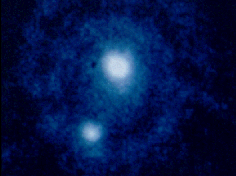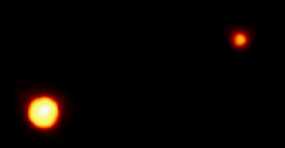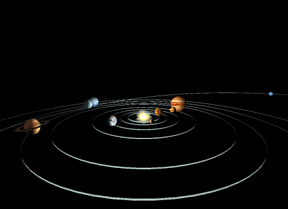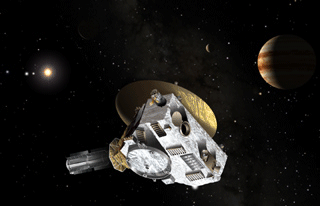New Horizons Mission Animation
This animation illustrates the New Horizons space mission to Pluto and beyond. Note: If you cannot see the movie you may need to download the latest QuickTime player. This animation begins shortly after the launch of New Horizons on January 19, 2006. It opens with the spacecraft separating from the upper stage (a Boeing STAR-48B third-stage kick motor) of its launch vehicle just above Earth's atmosphere. New Horizons zoomed away from our planet at the highest speed of any spacecraft leaving Earth so far... it was traveling at 16.21 km/s (36,300 mph) when its engine shut down! Next, the animation shows the spacecraft during its Jupiter flyby in February 2007. A gravity assist from the gas giant planet increases New Horizon's speed, cutting years off its journey to Pluto. The animation then shows a reddish Pluto appearing reflected in the lens of the spacecraft's camera, and the swath of the camera's field of view as it sweeps across Pluto. New Horizons pivots to keep Pluto in the field of view of its cameras as is swings past that icy world. As the spacecraft's motion plunges it into Pluto's shadow, New Horizons studies Pluto's thin atmosphere by observing changes in the sunlight passing through it near the edge of Pluto's disc. Just minutes after its encounter with Pluto, New Horizons zips by Pluto's large moon Charon. Finally, some time after the Pluto flyby, the spacecraft passes one of the many Kuiper Belt Objects and studies that frozen time capsule of our Solar System's formation. |
More New Horizons mission movies:
![]() Video of the launch of the New Horizons mission (5.5 MB)
Video of the launch of the New Horizons mission (5.5 MB)
![]() Animation of the trajectory of New Horizons through our Solar System (4.7 MB)
Animation of the trajectory of New Horizons through our Solar System (4.7 MB)














